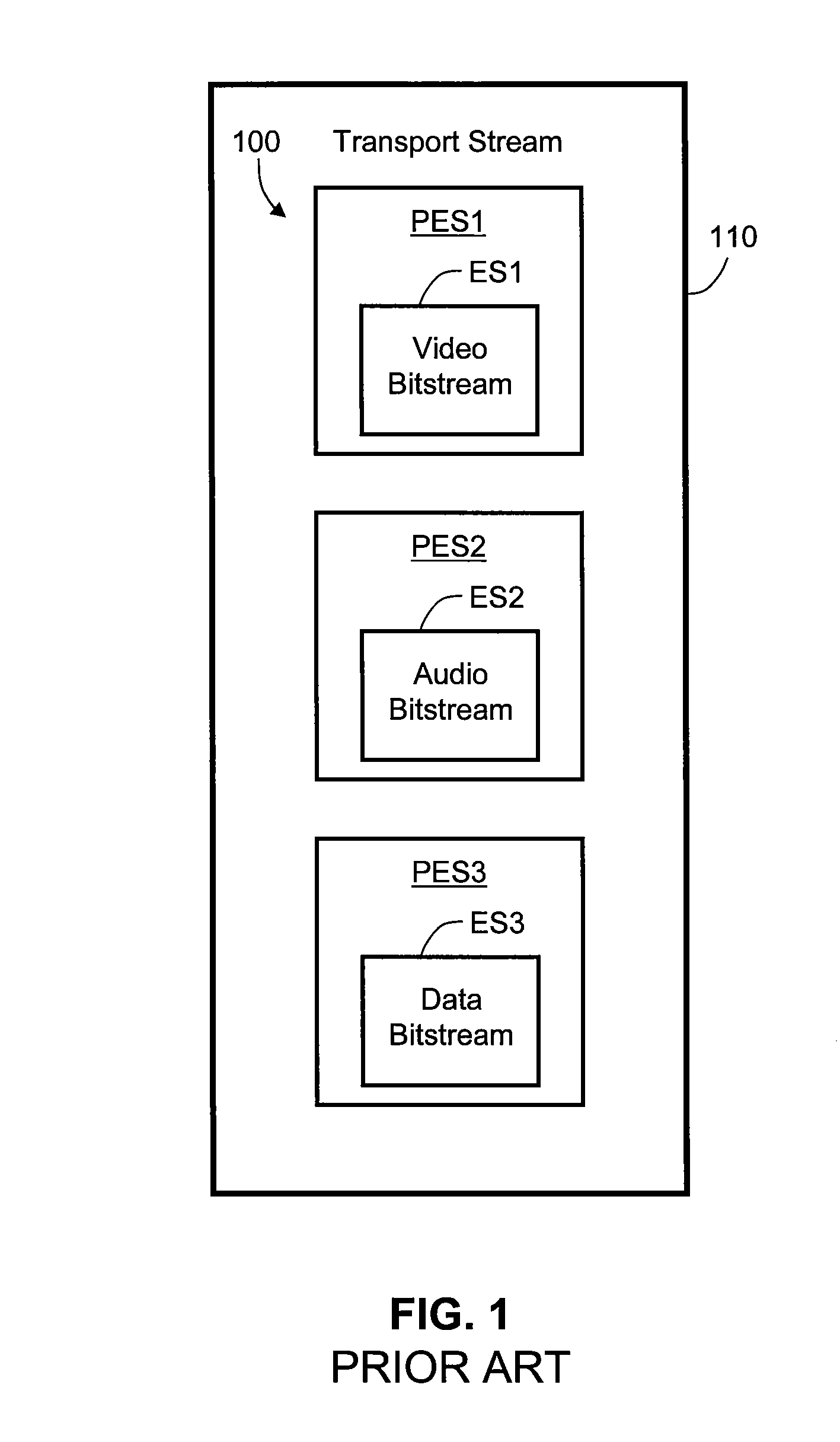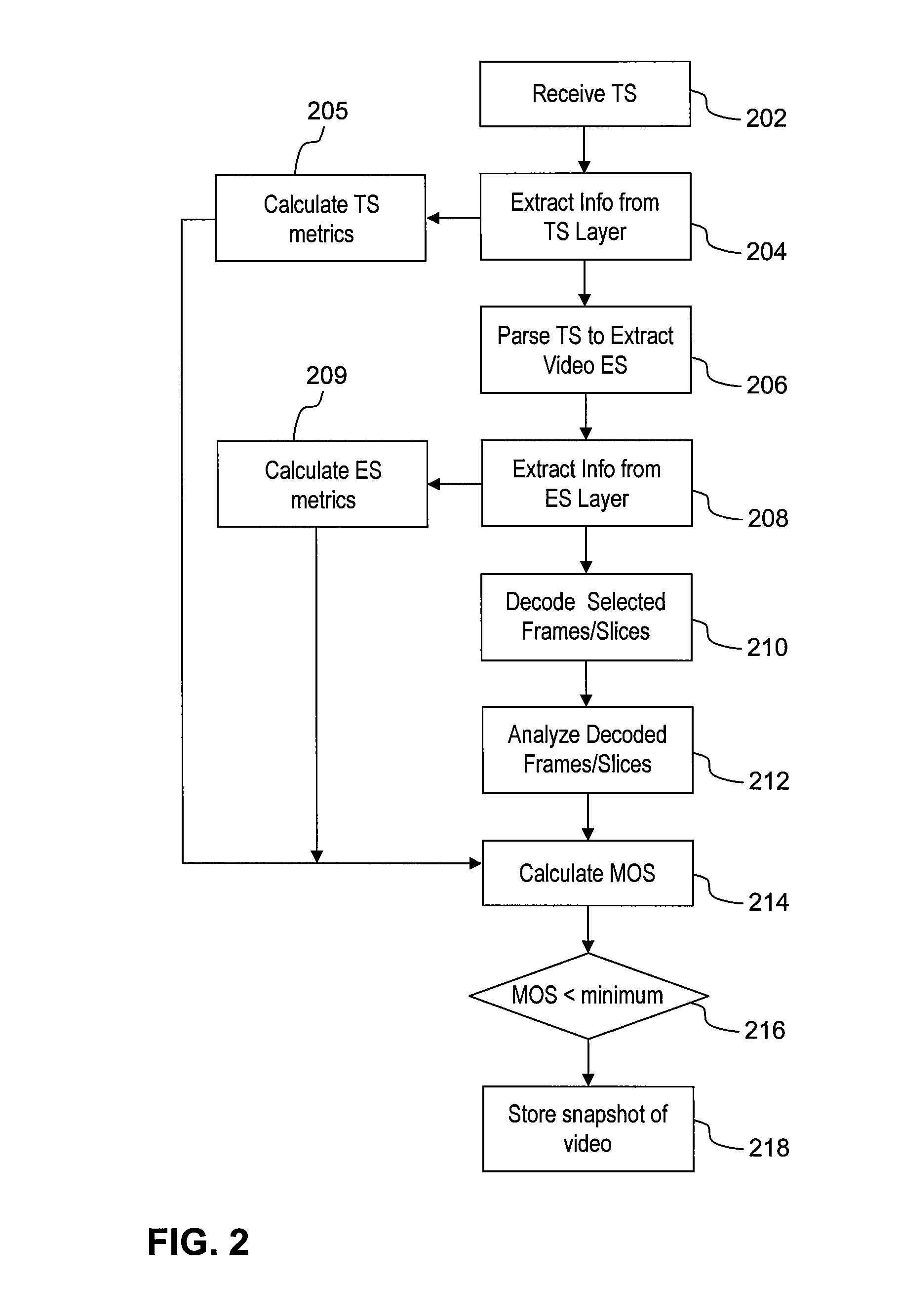Measuring Video Quality Using Partial Decoding
- Summary
- Abstract
- Description
- Claims
- Application Information
AI Technical Summary
Benefits of technology
Problems solved by technology
Method used
Image
Examples
Embodiment Construction
[0022]Embodiments of the invention contemplate a method of quantifying the quality of video contained in a packet-based video program using decoded pictures in combination with information extracted from the transport stream (TS) and / or elementary stream (ES) layers of the video bitstream. Information from the TS layer and the ES layer is derived from inspection of packets contained in the video stream. Each ES of interest is parsed from the TS, and each ES is itself parsed to extract information related to the video content, such as codec, bitrate, etc. The decoded pictures may include selected frames and / or slices decoded from the video ES, and are analyzed by one or more video content metrics known in the art. An estimate of mean opinion score (MOS) for the video is then generated from the video content metrics in combination with TS and / or ES quality metrics.
[0023]FIG. 2 is a block diagram illustrating a method 200 for analyzing quality of packet-based video, according to an emb...
PUM
 Login to View More
Login to View More Abstract
Description
Claims
Application Information
 Login to View More
Login to View More - R&D
- Intellectual Property
- Life Sciences
- Materials
- Tech Scout
- Unparalleled Data Quality
- Higher Quality Content
- 60% Fewer Hallucinations
Browse by: Latest US Patents, China's latest patents, Technical Efficacy Thesaurus, Application Domain, Technology Topic, Popular Technical Reports.
© 2025 PatSnap. All rights reserved.Legal|Privacy policy|Modern Slavery Act Transparency Statement|Sitemap|About US| Contact US: help@patsnap.com



